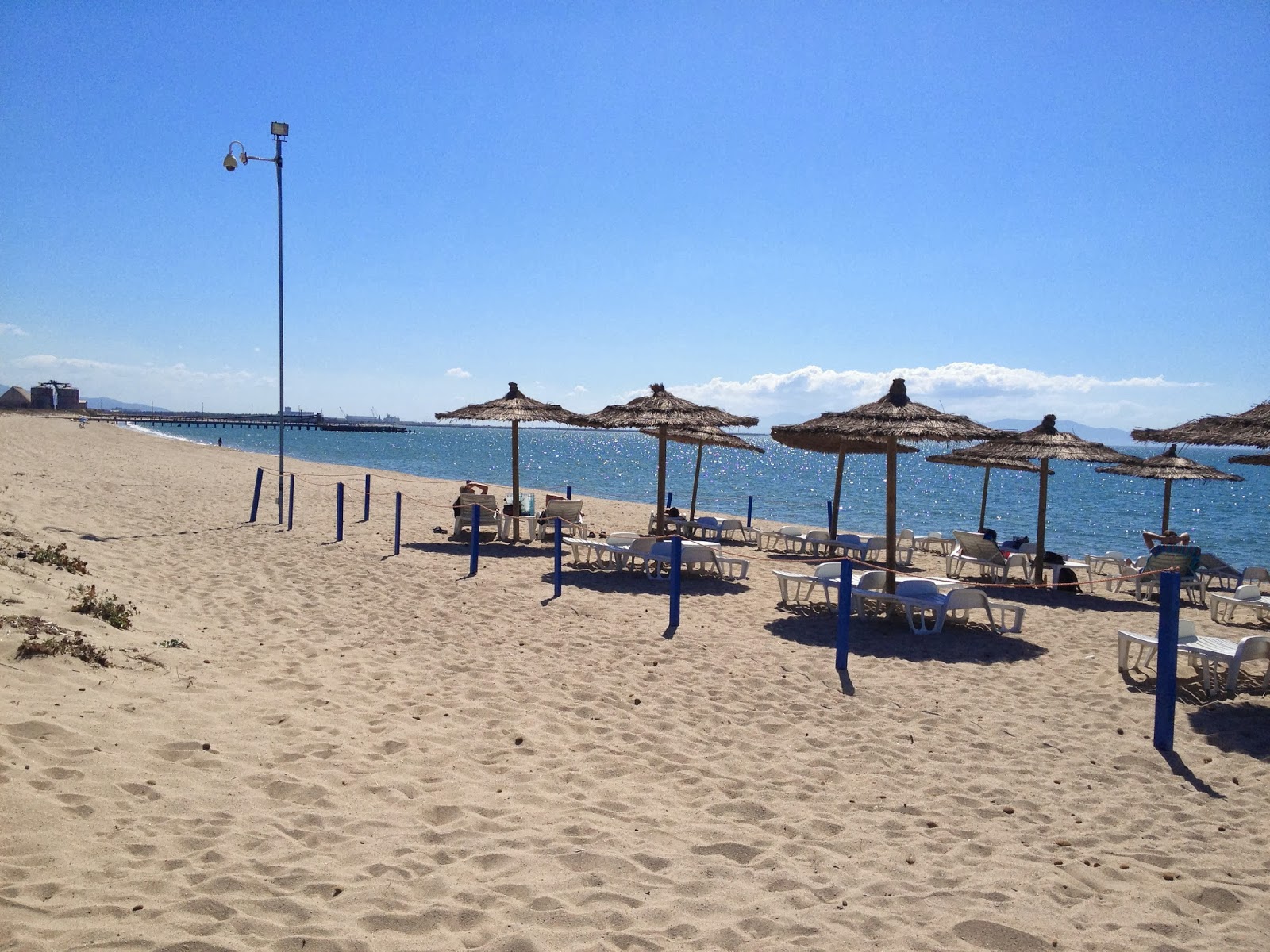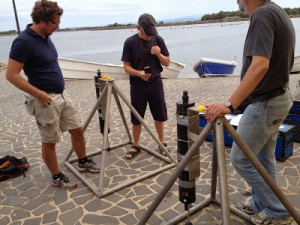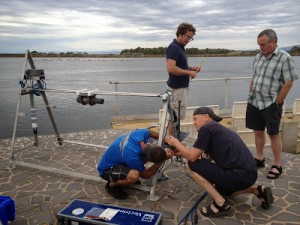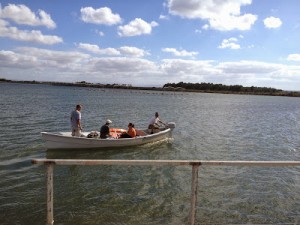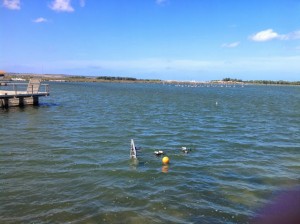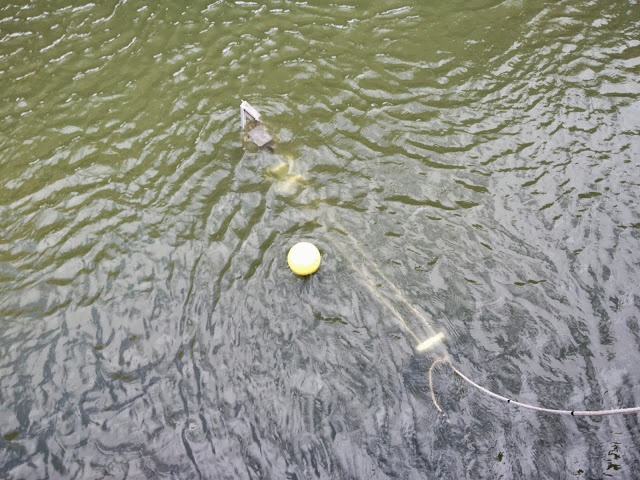Prof Carl L. Amos and PhD student Hachem Kassem, from the coastal processes research theme within Geology and Geophysics at NOCS/University of Southampton, have recently participated in a scientific field campaign in the Cabras Lagoon, Sardinia, Italy. The work was undertaken within RITMARE, the Italian National programme of scientific and technological marine research; through sub-project 3, Work Package 4, Action 5; WP4.A5 on hydrodynamic and morphodynamic modelling of lagoon systems in association with ISMAR (Institute of Marine Science) and IAMC (Institute for Coastal Marine Environment) both of the National Research Council (CNR) of Italy.
The work saw 11 deployments of the Benthic Roughness Acoustic Device (BRAD), a motorized frame-mounted Sediment Imaging Sonar (SIS) used to scan acoustically the water column for particulate matter in suspension, and bed roughness, providing a 3D image (1.7 sq.m area) of varying seabed types across the main lagoon inlets/channels. Also fitted to the frame were 2 Acoustic Doppler Velocimeters (ADVs) offset vertically to measure the 3D structure of turbulence near and above the bed, and a combined CTD/PT unit logging continuously conductivity, temperature (Salinity), and pressure. Water samples were collected repeatedly at various elevations during each run, to ensure later calibration of the backscatter echograpms given by the sonar. The UoS team also deployed three Valeport 808 Units across the lagoon, logging currents and waves, and turbidity at 40 cm above the bed. Meanwhile, the ISMAR/IAMC teams deployed a series of drifters to record Lagrangian currents along the lagoon (which compared remarkably well with Andrea Cucco/’s model of the lagoon through Georg Umgeisser’s SHYFEM model), as well several S4 sensors, and carried out a series of ADCP transects across and along the lagoon.
